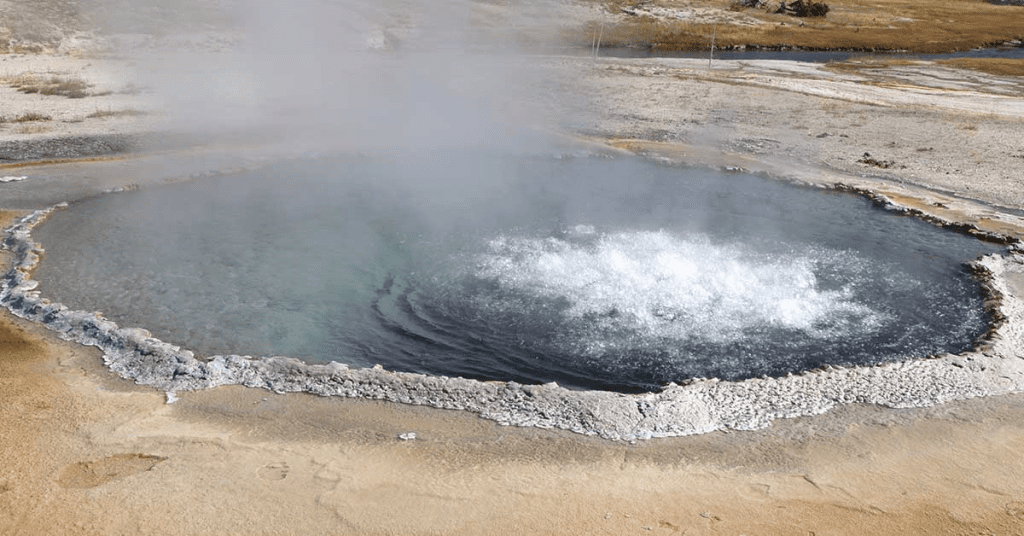Yellowstone National Park, a breathtaking natural wonder, has once again been shadowed by tragedy. The recent incident involving the accidental death of 23-year-old Colin Scott serves as a poignant reminder of the inherent risks that lurk beneath the park’s serene surface.

Yellowstone’s geothermal landscape, with its abundance of hot springs, geysers, and bubbling mud pots, is a captivating attraction that lures visitors from around the world. However, these thermal features conceal a hidden danger that often catches even the most seasoned adventurers off guard.
One such perilous activity is “hot potting,” which involves bathing in the park’s thermal pools. Despite clear warnings and signage, some visitors are drawn to the allure of these scorching waters, underestimating the grave risks they pose.
The recent incident involving Colin Scott serves as a heartbreaking example of the consequences of disregarding Yellowstone’s safety protocols. While exploring the park with his sister, Sable, Colin slipped and fell into a boiling hot spring, leading to his tragic demise.
In response to such incidents, the National Park Service has implemented various safety measures and educational campaigns to raise awareness among visitors. From warning signs to enhanced infrastructure, these efforts aim to minimize the risks and ensure a safe and enjoyable experience for all.

One of the key strategies is to educate visitors about the volatile nature of Yellowstone’s thermal features. By highlighting the extreme temperatures, acidic properties, and unpredictable behavior of these natural wonders, the park hopes to instill a deeper respect and caution among visitors.
In addition to education, the National Park Service has also tightened safety guidelines and enforcement measures. Visitors are required to stay on designated trails, heed all warning signs, and refrain from approaching or interacting with the park’s thermal features.
The tragic fate of Colin Scott serves as a stark reminder of the fragility of life and the immense power of nature. As we mourn this loss, it is essential to reflect on the importance of respecting Yellowstone’s delicate balance and honoring its legacy as a natural wonder.
By adhering to safety protocols and respecting the park’s boundaries, visitors can play a crucial role in preserving Yellowstone’s pristine ecosystem for generations to come. This commitment to responsible exploration is not only a matter of personal safety but also a testament to our collective stewardship of this natural treasure.
The loss of Colin Scott, and the countless others who have succumbed to Yellowstone’s perils, serves as a solemn reminder of the importance of prioritizing safety and respecting the inherent dangers that lurk within the park. By honoring their memory, we can inspire a renewed commitment to safe and responsible exploration, ensuring that Yellowstone’s beauty continues to be experienced by all who venture there.
Yellowstone National Park, with its breathtaking landscapes and awe-inspiring natural features, remains a cherished destination for millions of visitors. However, the tragic fate of Colin Scott underscores the crucial need for heightened awareness, strict adherence to safety guidelines, and a profound respect for the power of Yellowstone’s untamed wilderness.
By embracing this collective responsibility, we can ensure that the park’s legacy is preserved, and that the memory of those who have lost their lives within its boundaries is honored with the utmost reverence.